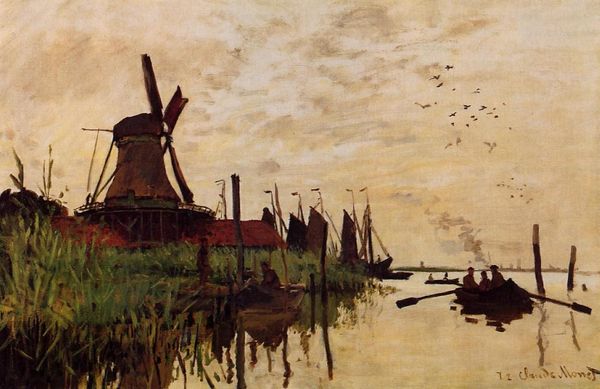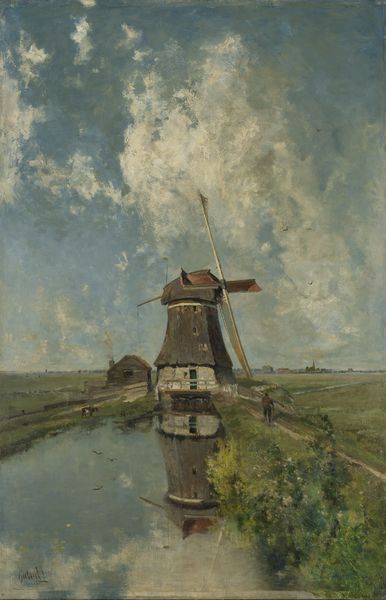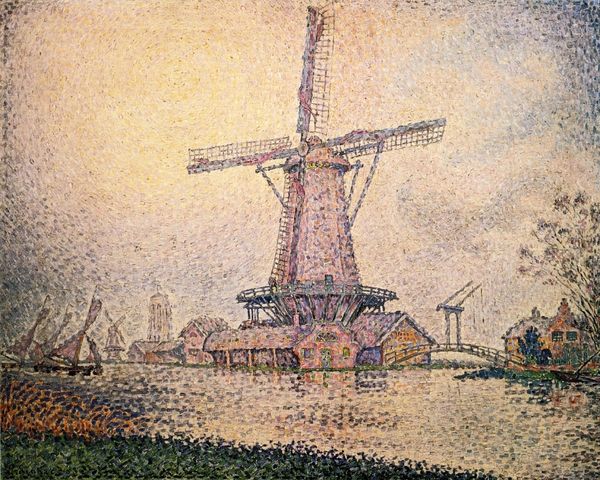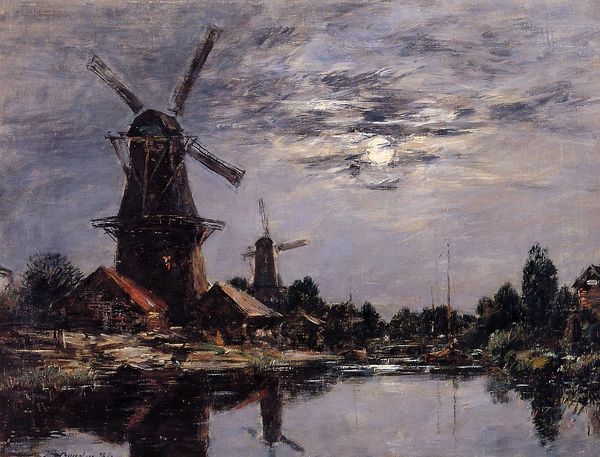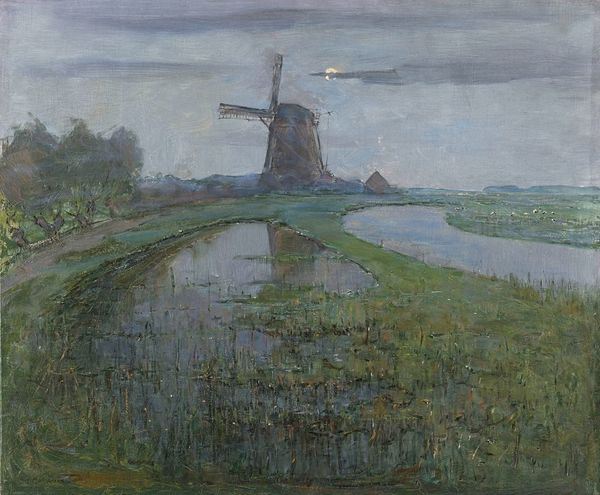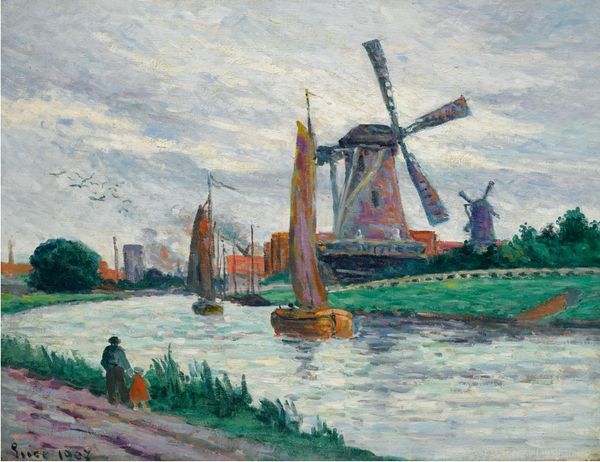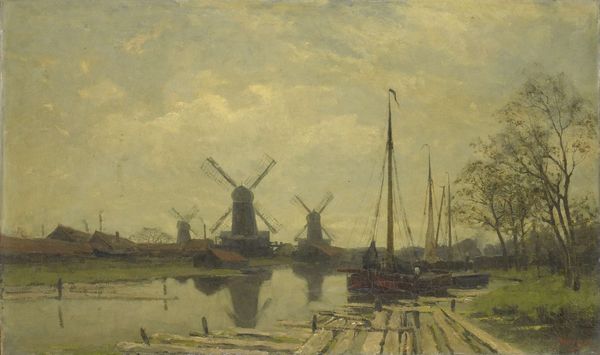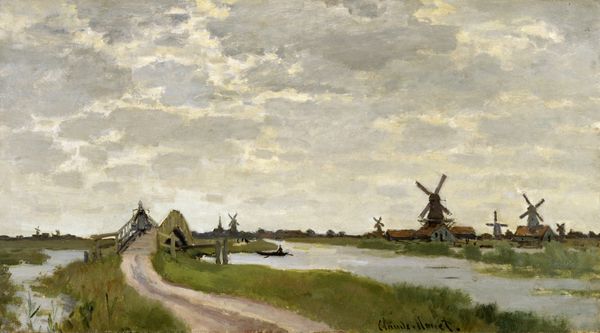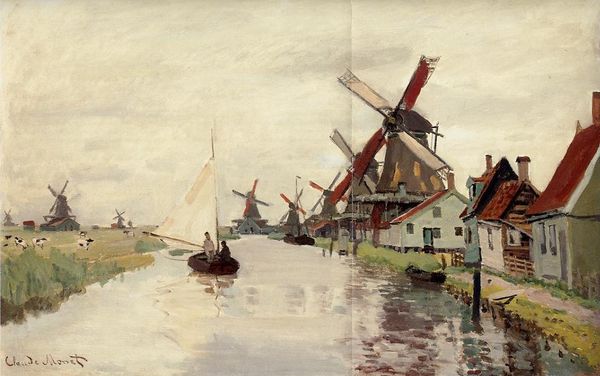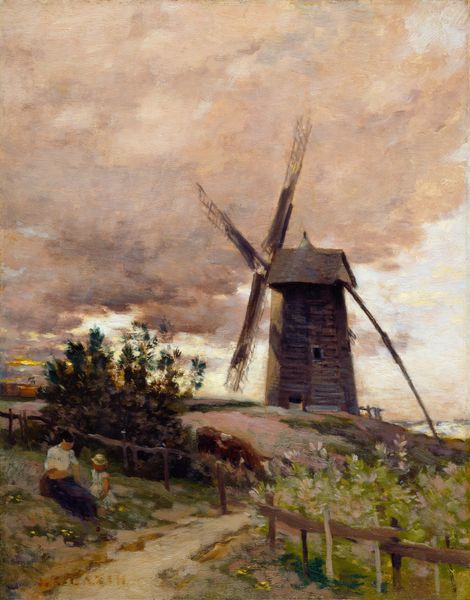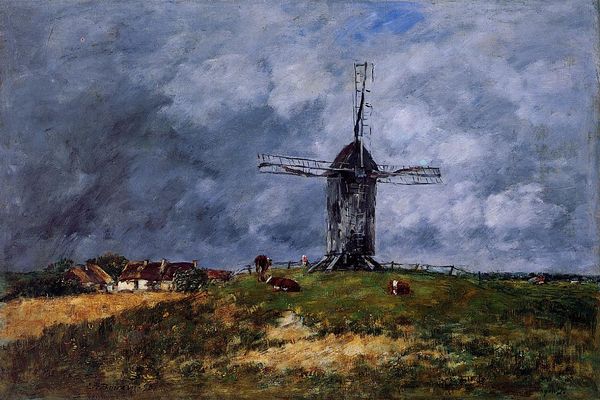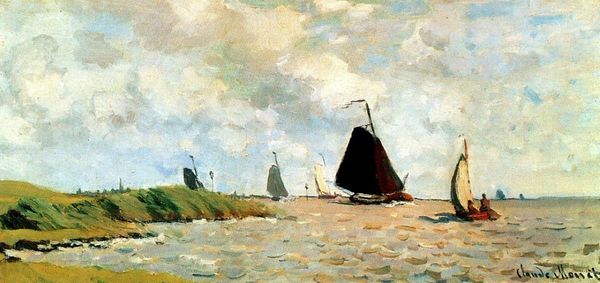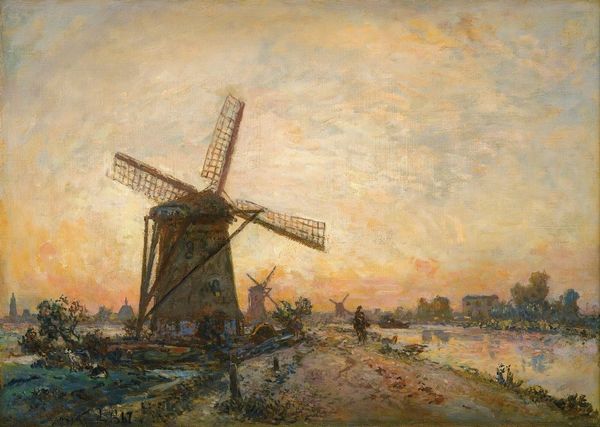
Dimensions: 99.06 x 125.73 cm
Copyright: Public domain
Curator: Piet Mondrian's "Windmill in the Gein," painted around 1907, presents a seemingly simple scene rendered with palpable emotional weight. Editor: My initial reaction is one of quietude, even melancholy. The muted palette and heavy brushstrokes evoke a somber stillness. Curator: It’s interesting you say that, given the period. Mondrian was working at a time of immense social and technological upheaval. Windmills, while traditionally symbols of Dutch ingenuity and self-sufficiency, were rapidly becoming obsolete. Could this painting, then, reflect anxieties about a vanishing way of life? Editor: Perhaps. But I'm equally struck by how Mondrian handles the light. See how it shimmers on the water, yet remains diffused and atmospheric? The composition relies heavily on subtle tonal shifts rather than sharp contrasts. There is some underlying geometric evenness, like in the way the arms of the mill interact with the cloud lines. Curator: That diffused light could indeed represent a period of transition— the fading of traditional values as modernism took hold. Considering Mondrian's later abstract works, we can also interpret the windmill itself as a nascent geometric form, an early stage in his reduction of reality to its essential components. We cannot forget how his spirituality intertwined with such aesthetic interests. Editor: It’s true, even here we see the beginnings of a more simplified approach. Though the scene is representational, Mondrian abstracts form with his confident use of line, texture and shadow. It isn’t perfect mimicry but selective reduction of key characteristics. Curator: Absolutely. In a society grappling with modernization, simplification became a means of grasping the core meaning and identity, especially regarding the rise of both secular and industrial life. Editor: Looking at it this way sheds light on the social and political undercurrents rippling beneath the surface, shaping not just this landscape, but art itself. Curator: It certainly allows us to reconsider this image as more than a mere landscape, acknowledging its significance in a pivotal cultural shift. Editor: Indeed. The visual elements point directly at the emotional resonance—it is through form that we experience this sense of shift.
Comments
No comments
Be the first to comment and join the conversation on the ultimate creative platform.
